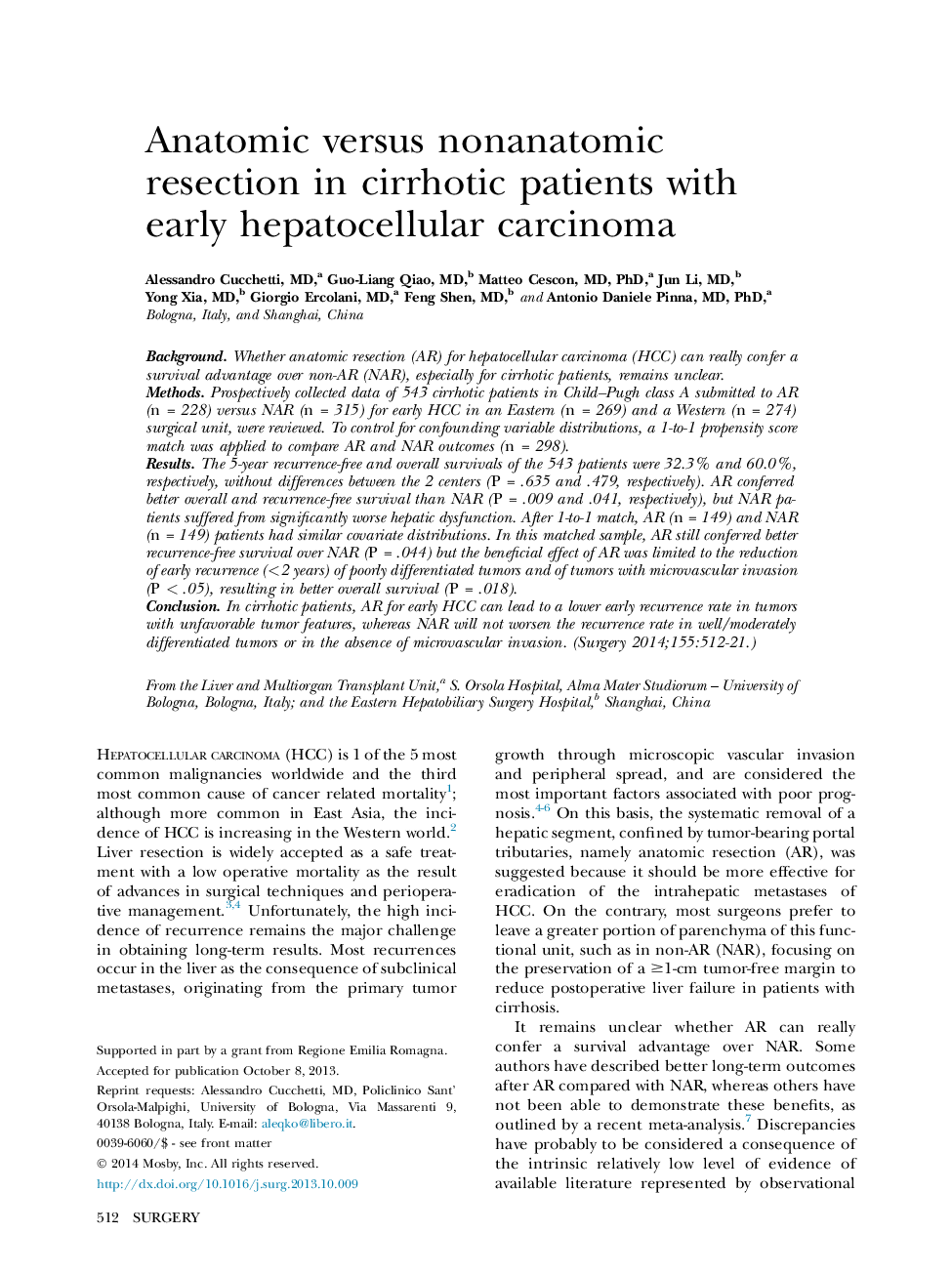| Article ID | Journal | Published Year | Pages | File Type |
|---|---|---|---|---|
| 6255601 | Surgery | 2014 | 10 Pages |
BackgroundWhether anatomic resection (AR) for hepatocellular carcinoma (HCC) can really confer a survival advantage over non-AR (NAR), especially for cirrhotic patients, remains unclear.MethodsProspectively collected data of 543 cirrhotic patients in Child-Pugh class A submitted to AR (n = 228) versus NAR (n = 315) for early HCC in an Eastern (n = 269) and a Western (n = 274) surgical unit, were reviewed. To control for confounding variable distributions, a 1-to-1 propensity score match was applied to compare AR and NAR outcomes (n = 298).ResultsThe 5-year recurrence-free and overall survivals of the 543 patients were 32.3% and 60.0%, respectively, without differences between the 2 centers (P = .635 and .479, respectively). AR conferred better overall and recurrence-free survival than NAR (P = .009 and .041, respectively), but NAR patients suffered from significantly worse hepatic dysfunction. After 1-to-1 match, AR (n = 149) and NAR (n = 149) patients had similar covariate distributions. In this matched sample, AR still conferred better recurrence-free survival over NAR (P = .044) but the beneficial effect of AR was limited to the reduction of early recurrence (<2 years) of poorly differentiated tumors and of tumors with microvascular invasion (P < .05), resulting in better overall survival (P = .018).ConclusionIn cirrhotic patients, AR for early HCC can lead to a lower early recurrence rate in tumors with unfavorable tumor features, whereas NAR will not worsen the recurrence rate in well/moderately differentiated tumors or in the absence of microvascular invasion.
